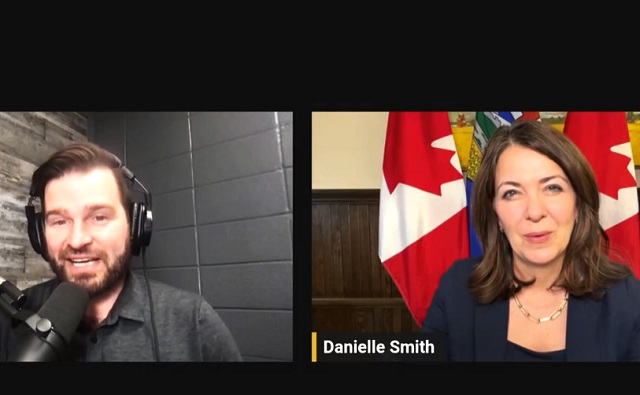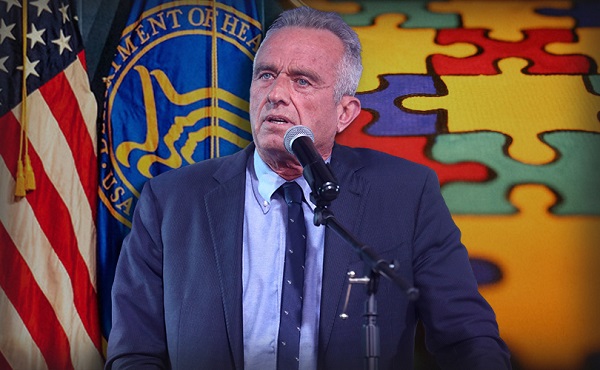Alberta
Danielle Smith promises to strengthen Alberta’s laws to protect speech, vaccine free, gun owners

From LifeSiteNews
‘I believe in freedom’
Alberta Premier Danielle Smith promised to enshrine into “law” protections for people in her province who choose not to be vaccinated as well as strengthen gun rights and safeguard free speech by beefing up the provincial Bill of Rights.
“I can give you my commitment that no one is going to be forced to make a medical choice that they don’t want to,” Smith told local blogger Shaun Newman on his regular “Podcast” show on Monday.
“I just don’t believe that that is the direction that Albertans want to go. I believe in freedom, and so until I can get that enshrined in law, you have my commitment, no one’s going to be forced to be vaccinated.”
Premier Danielle Smith https://t.co/Wg6KaWVfYO
— Shaun Newman Podcast (@SNewmanPodcast) December 18, 2023
Last month, a panel convened by Smith to investigate the previous government’s COVID governance released its findings, recommending many pro-freedom policies be implemented, such as strengthening personal medical freedoms via legislation so that one does not lose their job for refusing a vaccine as well as concluding that Albertans’ rights were indeed infringed on.
The panel was tasked to review “legislation and governance practices used by the Government of Alberta during the management of the COVID-19 public health emergency.”
Notable highlights from the report show a list of what are considered fundamental rights of Albertans that the report recommends the government take steps to protect via the Alberta Bill of Rights.
Newman asked Smith about the panel’s findings and what her government would do with the recommendations. She responded by saying that some work has already been done to ensure that “unelected” health officials do not have sole decision-making power in emergencies.
“We had a health act that essentially gave the exclusive power to one person to shut down our entire economy and if there was any attempt stepped in to moderate those views. That was the part that was considered illegal, which makes no sense,” Smith said.
“What we’ve done is we’ve changed the Public Health Act. So now that the chief medical officer of health gives advice to Cabinet, but Cabinet becomes the ultimate decision-maker, which is how it should be in an emergency.”
Smith is not just talk, however, when it comes to making politicians accountable. She is looking to pass a new law, Bill 6, or the Public Health Amendment Act, that would hold politicians accountable in times of a health crisis by putting sole decision-making on them for health matters instead of unelected medical officers.
Even before Smith became premier, she was not shy in speaking out in favor of the rights of those who chose not to get the COVID shots.
She made headlines in October 2022 after promising she would look at pardoning Christian pastors who were jailed for violating so-called COVID policies while Kenney was premier.
Smith took over from Jason Kenney as leader of the United Conservative Party (UCP) on October 11, 2022, after winning the leadership of the party. Kenney was ousted due to low approval ratings and for reneging on promises not to lock Alberta down as well as enacting a vaccine passport.
Under Kenney, thousands of nurses, doctors, and other healthcare and government workers lost their jobs for choosing to not get the jabs, leading Smith to say – only minutes after being sworn in – that over the past year the “unvaccinated” were the “most discriminated against” group of people in her lifetime.
Smith promises to protect gun rights
When it comes to gun rights of Albertans, Smith pledged that she would do what she can to make sure the federal government stays “out” of its lane and keeps its hands off people’s legally purchased firearms.
“We now just have a bill that’s passed through the federal government, which is going to, presumably, start confiscating the firearms from people who purchased them legally or using them for legal purposes, and is that something that we should also be putting into the Bill of Rights,” Smith said.
“So, the discussion about opening the Bill of Rights began because of wanting to preserve medical choice, we’re seeing the need to expand in on the free speech front because free speech rights are under attack. But we also think that there might be other things that we need to look at.”
Smith noted that she has already had a conversation with one of the MLAs and asked him if he would be “willing to take on a consultation to make sure that when we do amend the Bill of Rights, which we will do, that we’re not missing anything.”
The Canadian federal government’s controversial gun grab bill C-21, which bans many types of guns, including handguns, and mandates a buyback program became law last week after Senators voted 60- 24 in favor of the bill.
In May, it passed in the House of Commons. After initially denying the bill would impact hunters, Prime Minister Justin Trudeau eventually admitted that C-21 would indeed ban certain types of hunting rifles.
Smith, along with premiers from no less than four additional provinces, are opposed to C-21.
Trudeau’s gun-grab was first announced after a deadly mass shooting in Nova Scotia in May 2020 in which Trudeau banned over 1,500 “military-style assault firearms” with a plan to begin buying them back from owners.
If the ban is enforced, legal gun owners in possession of the federally regulated Possession and Acquisition License (PAL) would be barred from buying, selling, transporting, and even importing a slew of guns the government has categorized as “assault-style” rifles.
Alberta
Made in Alberta! Province makes it easier to support local products with Buy Local program

Show your Alberta side. Buy Local. |
When the going gets tough, Albertans stick together. That’s why Alberta’s government is launching a new campaign to benefit hard-working Albertans.
Global uncertainty is threatening the livelihoods of hard-working Alberta farmers, ranchers, processors and their families. The ‘Buy Local’ campaign, recently launched by Alberta’s government, encourages consumers to eat, drink and buy local to show our unified support for the province’s agriculture and food industry.
The government’s ‘Buy Local’ campaign encourages consumers to buy products from Alberta’s hard-working farmers, ranchers and food processors that produce safe, nutritious food for Albertans, Canadians and the world.
“It’s time to let these hard-working Albertans know we have their back. Now, more than ever, we need to shop local and buy made-in-Alberta products. The next time you are grocery shopping or go out for dinner or a drink with your friends or family, support local to demonstrate your Alberta pride. We are pleased tariffs don’t impact the ag industry right now and will keep advocating for our ag industry.”
Alberta’s government supports consumer choice. We are providing tools to help folks easily identify Alberta- and Canadian-made foods and products. Choosing local products keeps Albertans’ hard-earned dollars in our province. Whether it is farm-fresh vegetables, potatoes, honey, craft beer, frozen food or our world-renowned beef, Alberta has an abundance of fresh foods produced right on our doorstep.
Quick facts
- This summer, Albertans can support local at more than 150 farmers’ markets across the province and meet the folks who make, bake and grow our food.
- In March 2023, the Alberta government launched the ‘Made in Alberta’ voluntary food and beverage labelling program to support local agriculture and food sectors.
- Through direct connections with processors, the program has created the momentum to continue expanding consumer awareness about the ‘Made in Alberta’ label to help shoppers quickly identify foods and beverages produced in our province.
- Made in Alberta product catalogue website
Related information
Alberta
Province to expand services provided by Alberta Sheriffs: New policing option for municipalities

Expanding municipal police service options |
Proposed amendments would help ensure Alberta’s evolving public safety needs are met while also giving municipalities more options for local policing.
As first announced with the introduction of the Public Safety Statutes Amendment Act, 2024, Alberta’s government is considering creating a new independent agency police service to assume the police-like duties currently performed by Alberta Sheriffs. If passed, Bill 49 would lay additional groundwork for the new police service.
Proposed amendments to the Police Act recognize the unique challenges faced by different communities and seek to empower local governments to adopt strategies that effectively respond to their specific safety concerns, enhancing overall public safety across the province.
If passed, Bill 49 would specify that the new agency would be a Crown corporation with an independent board of directors to oversee its day-to-day operations. The new agency would be operationally independent from the government, consistent with all police services in Alberta. Unlike the Alberta Sheriffs, officers in the new police service would be directly employed by the police service rather than by the government.
“With this bill, we are taking the necessary steps to address the unique public safety concerns in communities across Alberta. As we work towards creating an independent agency police service, we are providing an essential component of Alberta’s police framework for years to come. Our aim is for the new agency is to ensure that Albertans are safe in their communities and receive the best possible service when they need it most.”
Additional amendments would allow municipalities to select the new agency as their local police service once it becomes fully operational and the necessary standards, capacity and frameworks are in place. Alberta’s government is committed to ensuring the new agency works collaboratively with all police services to meet the province’s evolving public safety needs and improve law enforcement response times, particularly in rural communities. While the RCMP would remain the official provincial police service, municipalities would have a new option for their local policing needs.
Once established, the agency would strengthen Alberta’s existing policing model and complement the province’s current police services, which include the RCMP, Indigenous police services and municipal police. It would help fill gaps and ensure law enforcement resources are deployed efficiently across the province.
Related information
-

 2025 Federal Election2 days ago
2025 Federal Election2 days agoRCMP Whistleblowers Accuse Members of Mark Carney’s Inner Circle of Security Breaches and Surveillance
-

 2025 Federal Election2 days ago
2025 Federal Election2 days agoMEI-Ipsos poll: 56 per cent of Canadians support increasing access to non-governmental healthcare providers
-

 Health2 days ago
Health2 days agoTrump admin directs NIH to study ‘regret and detransition’ after chemical, surgical gender transitioning
-

 Daily Caller12 hours ago
Daily Caller12 hours agoTrump Executive Orders ensure ‘Beautiful Clean’ Affordable Coal will continue to bolster US energy grid
-

 Business14 hours ago
Business14 hours agoChina, Mexico, Canada Flagged in $1.4 Billion Fentanyl Trade by U.S. Financial Watchdog
-

 2025 Federal Election2 days ago
2025 Federal Election2 days agoBureau Exclusive: Chinese Election Interference Network Tied to Senate Breach Investigation
-

 2025 Federal Election23 hours ago
2025 Federal Election23 hours agoTucker Carlson Interviews Maxime Bernier: Trump’s Tariffs, Mass Immigration, and the Oncoming Canadian Revolution
-

 Autism2 days ago
Autism2 days agoAutism Rates Reach Unprecedented Highs: 1 in 12 Boys at Age 4 in California, 1 in 31 Nationally




